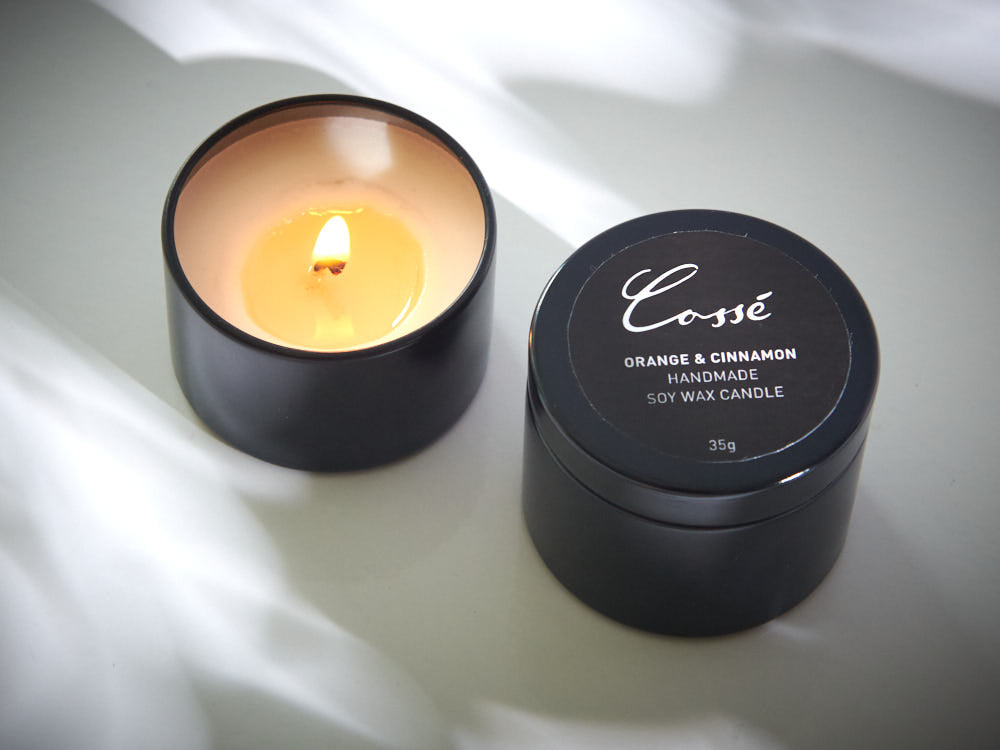Infuse Your Home with the Scent of Crystal Soy Candles and Home Fragrance
Infuse Your Home with the Scent of Crystal Soy Candles and Home Fragrance
Blog Article
From Wick to Wax: Comprehending the Chemistry Behind Soy Wax Candles and Their Environmental Influence
As we illuminate our spaces with the cozy radiance of candle lights, there exists a realm of detailed chemistry behind the seemingly simple act of lighting a soy wax candle light. Join us as we decipher the scientific details behind soy wax candle lights and discover their implications on our atmosphere.
Soy Wax Vs. Paraffin Wax
When comparing soy wax and paraffin wax for candle light production, it is essential to understand the unique features and advantages of each material. Soy wax is an all-natural, sustainable source derived from soybean oil, making it naturally degradable and green - candles. On the other hand, paraffin wax is a byproduct of petroleum refining, which raises concerns concerning its environmental impact and sustainability
Soy wax candles melt cleaner and discharge much less soot contrasted to paraffin wax candles, making them a healthier selection for indoor air top quality. Additionally, soy wax has a reduced melting factor, enabling a longer-lasting candle that distributes scent a lot more efficiently. Paraffin wax, on the other hand, tends to melt faster and less easily, possibly launching unsafe chemicals right into the air.
From a sustainability viewpoint, soy wax is favored for its biodegradability and renewable sourcing, lining up with the growing consumer preference for environmentally conscious items. While paraffin wax has been a standard option in candle making as a result of its price and simplicity of use, the shift in the direction of environmentally friendly choices like soy wax is gaining momentum in the market.
Chemical Composition of Soy Wax

Burning Process in Soy Candles
The chemical structure of soy wax straight affects the burning process in soy candles, impacting aspects such as shed time, aroma launch, and ecological influence. When a soy candle light is lit, the warm from the flame melts the wax near the wick.
The combustion performance of soy candles is affected by the pureness of the soy wax and the high quality of the wick. A clean-burning soy candle with a properly sized wick will lessen and create a stable fire residue formation. This not just prolongs the burn time of the candle light however also boosts the release of scents. Additionally, soy wax candles have a reduced environmental influence compared to paraffin candles due to their biodegradable and sustainable nature.

Environmental Advantages of Soy Wax

Thought about a lasting option to conventional paraffin wax, soy wax provides significant ecological advantages that make it a popular choice among eco-conscious consumers. One considerable advantage of soy wax is its sustainable sourcing. Soy wax is stemmed from soybean oil, which is mostly grown in the USA. The cultivation of soybeans assists support neighborhood farmers and lowers the dependence on non-renewable nonrenewable fuel sources utilized in paraffin wax production. In addition, soy wax is biodegradable, indicating it damages down normally without launching dangerous toxic substances right into the environment. This characteristic Web Site makes soy wax candles a more environmentally pleasant alternative compared to paraffin wax candle lights, which are made from oil, a non-renewable resource. Soy wax burns cleaner and produces much less residue than paraffin wax, contributing to far better indoor air top quality and decreasing the demand for cleansing and maintenance. Generally, the environmental advantages of soy wax line up with the growing need for eco-friendly and lasting products in the marketplace.
Recycling and Disposal Factors To Consider
Recycling and correct disposal of soy wax candles play an important role in preserving environmental sustainability and minimizing waste in areas and houses. The first step is to make sure that the candle has shed entirely when it comes to recycling soy wax candle lights. This can be check that accomplished by allowing the candle light to shed till the wick is no more functional, and after that letting the continuing to be wax cool and solidify. Once the wax has actually solidified, it can be meticulously removed from the container.

In terms of disposal, if recycling is not an option, soy wax candle lights are eco-friendly and can be safely gotten rid of in the majority of household waste systems. Nevertheless, it is always advised to inspect with regional reusing facilities or waste monitoring solutions for particular guidelines on candle light disposal to make sure proper handling and environmental management.
Verdict
To conclude, the chemistry behind soy wax candle lights discloses their ecological advantages over paraffin wax candles. Soy wax, stemmed from soybean oil, burns cleaner and produces much less residue when contrasted to paraffin wax. The combustion procedure in soy candle lights is a lot more effective, causing a much longer and much more even shed. Additionally, soy wax is sustainable and eco-friendly, making it a more lasting selection for candle light production. Recycling and correct disposal of soy wax candle lights further add to their environmental influence.
When comparing soy wax and paraffin wax for candle production, it is necessary to comprehend the distinct characteristics and advantages of each material (home fragrance).Soy wax candles burn cleaner and release less soot contrasted to paraffin wax candle lights, making them a healthier selection for interior air top quality.Thought about a sustainable alternative to standard paraffin this wax, soy wax supplies noteworthy ecological benefits that make it a popular option among eco-conscious consumers. Soy wax burns cleaner and produces much less soot than paraffin wax, adding to much better indoor air high quality and reducing the requirement for cleansing and maintenance.In verdict, the chemistry behind soy wax candles exposes their environmental advantages over paraffin wax candle lights
Report this page